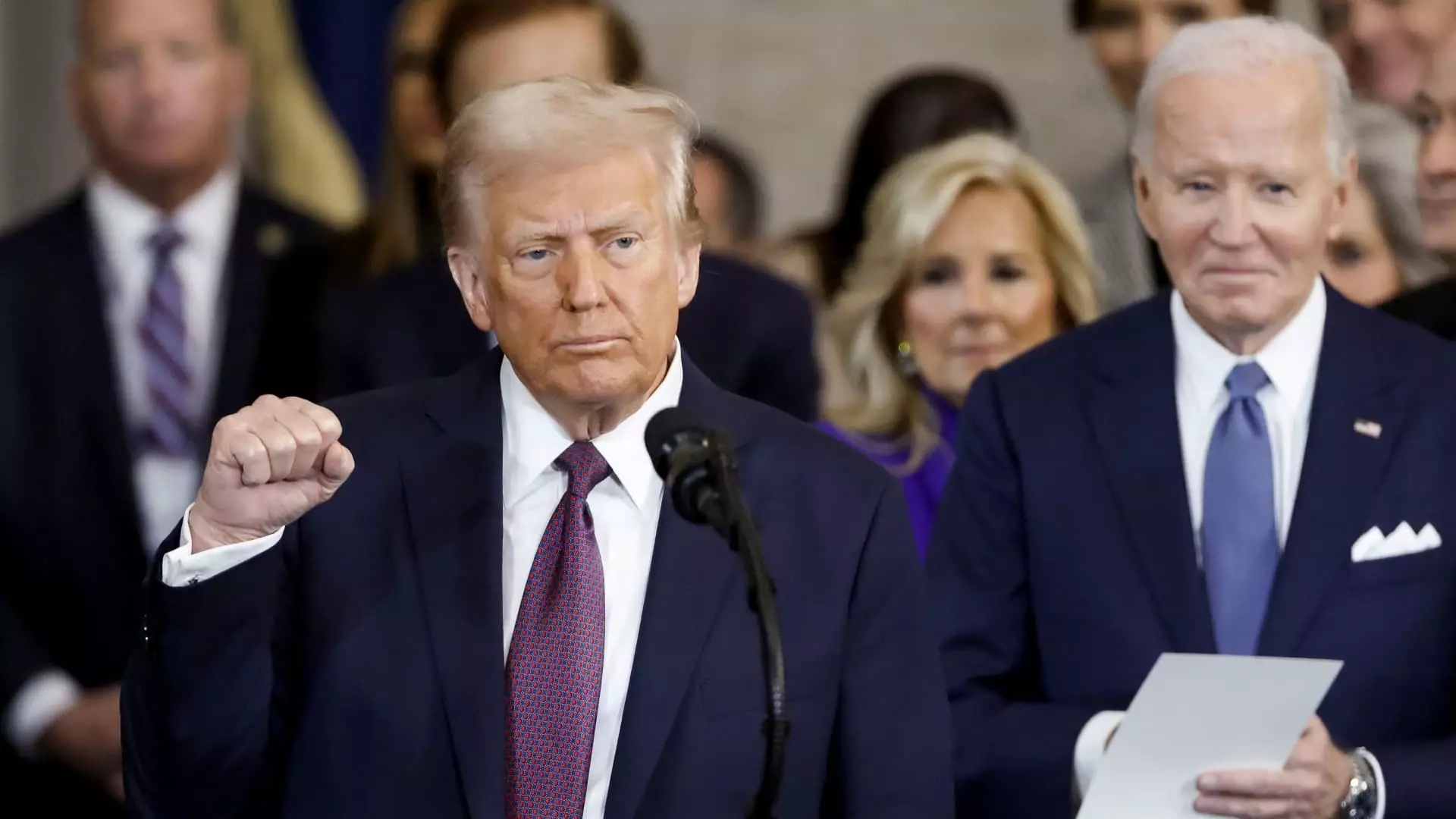In the realm of politics, the transfer of blame can be as predictable as the shifting tides. Recently, Commerce Secretary Howard Lutnick took to Bloomberg television to argue sensationally that former President Joe Biden was responsible for adverse economic indicators during Donald Trump’s presidency, an assertion marinated in partisan rhetoric. In a political landscape deeply factionalized, such accusations become performance art rather than factual analysis. Lutnick emphasized that Biden left Trump with an “economic catastrophe,” a phrase coined to scapegoat the previous administration without acknowledging the complexities inherent in economic data.
The economic baseline used for these critiques often lacks nuance, requiring scrutiny beyond gut feeling or ideological predisposition. Although Lutnick is quick to assign blame to Biden, do we fully appreciate the intricate web of factors that influence economic performance? Economists typically argue that assertions regarding causality must account for time lags and varied influences beyond the control of any one individual, regardless of their political affiliations. The blame game fuels divisive narratives, diverting attention from systemic issues affecting the economy, such as global trade dynamics, financial market volatility, and demographic shifts.
The Numbers Tell a Different Story
Lutnick’s assertion comes amid notable economic data pointing to a year-over-year growth rate of 2.8%. While the narrative often emphasizes declines, it conveniently overlooks the broader economic indicators that paint a more complex picture. Although the stock market experienced turbulence, intertwining this with an isolated figure from a specific short-term span misrepresents realities for political gain. Would it not be far more productive to engage in dialogue about effective policy measures rather than trading barbs in a high-stakes blame game?
Critics of Lutnick’s remarks might point out that his selective use of data skirts the truth. The inflation rate stood at a modest 2.9% in December, well below the staggering 40-year high of 9.1% recorded in mid-2022. This selective time frame contextually twists the narrative, suggesting an agenda rather than genuine economic analysis. The cherry-picking of data points to bolster political claims is a tactic often seen in political discourse and one that reflects poorly on the ability to assess policies searchlighted by hard numbers.
Fear of Tariffs and Economic Growth
The apprehension surrounding Trump’s tariffs on Canada and Mexico merits deeper analysis. Lutnick’s confidence in the administration’s supremacy rests precariously on the belief that these measures will invigorate domestic manufacturing, yet the economic climate is inherently fragile. Economists warn that higher tariffs can stifle growth by prompting retaliation from other nations, as well as inflating prices for consumers. Through the lens of liberal economic principles, this type of economic policy can easily seem regressive, sacrificing long-term prosperity for short-term victories in trade wars.
When Lutnick insists we shouldn’t willfully conflate current economic data with the previous administration’s legacy, he applies a coat of political varnish to economic discourse. Shouldn’t the focus instead be on mitigating the vulnerabilities exposed by murky economic pathways rather than deflecting criticism to win favor? Using government statistics as a political football undermines the integrity of economic discussion altogether.
Consumer Confidence and Its Implications
Diving deeper into the metrics of economic health, we encounter troubling indicators, such as the recent drop in consumer confidence reported by the Conference Board. Lutnick’s dismissal of this data as muddled Biden-related information poses an oversimplification of a critical sentiment gauge impacting consumer spending and, thus, overall economic health. The seven-point decrease referenced—the largest since August 2021—reveals public sentiment whose ramifications could lead to a self-fulfilling economic downturn.
In such times, trusting consumer sentiment becomes paramount. Maintaining high consumer confidence is essential for economic stability and growth, and glossing over adverse indicators can potentially do irreparable harm. If citizens feel insecure in their futures, they pull back spending, which can cascade through the economy like an avalanche. This systemic issue transcends partisan politics: it is a litmus test for economic resilience. Blame may suffice momentarily, but it ultimately sidesteps the more pressing question—how do we collaboratively navigate through economic uncertainties?
Elon Musk and Restructuring Economic Metrics
Amidst this whirlwind of misinformation and economic machinations, we have figures like Elon Musk publicly advocating for an overhaul of GDP measurements—a view echoed, albeit controversially, by Lutnick. To disentangle consumer spending from government expenditures may superficially appear sound, but such a move risks complicating our understanding of economic health even further. It enables selective interpretation of data, leading us down a path of economic misinformation.
In arguing for a more refined approach to economic evaluation, Musk’s suggestions resonate with a faction of the electorate disillusioned by traditional metrics. However, such radical healthcare services measures would mask more than it reveals in economic debates, creating a façade of clarity while obfuscating the realities of economic interdependence. Rather than rushing to restructure, perhaps the focus should be on reinforcing the existing frameworks with transparency and integrity—bringing forth the accountability necessary for sustainable economic progress.


Leave a Reply